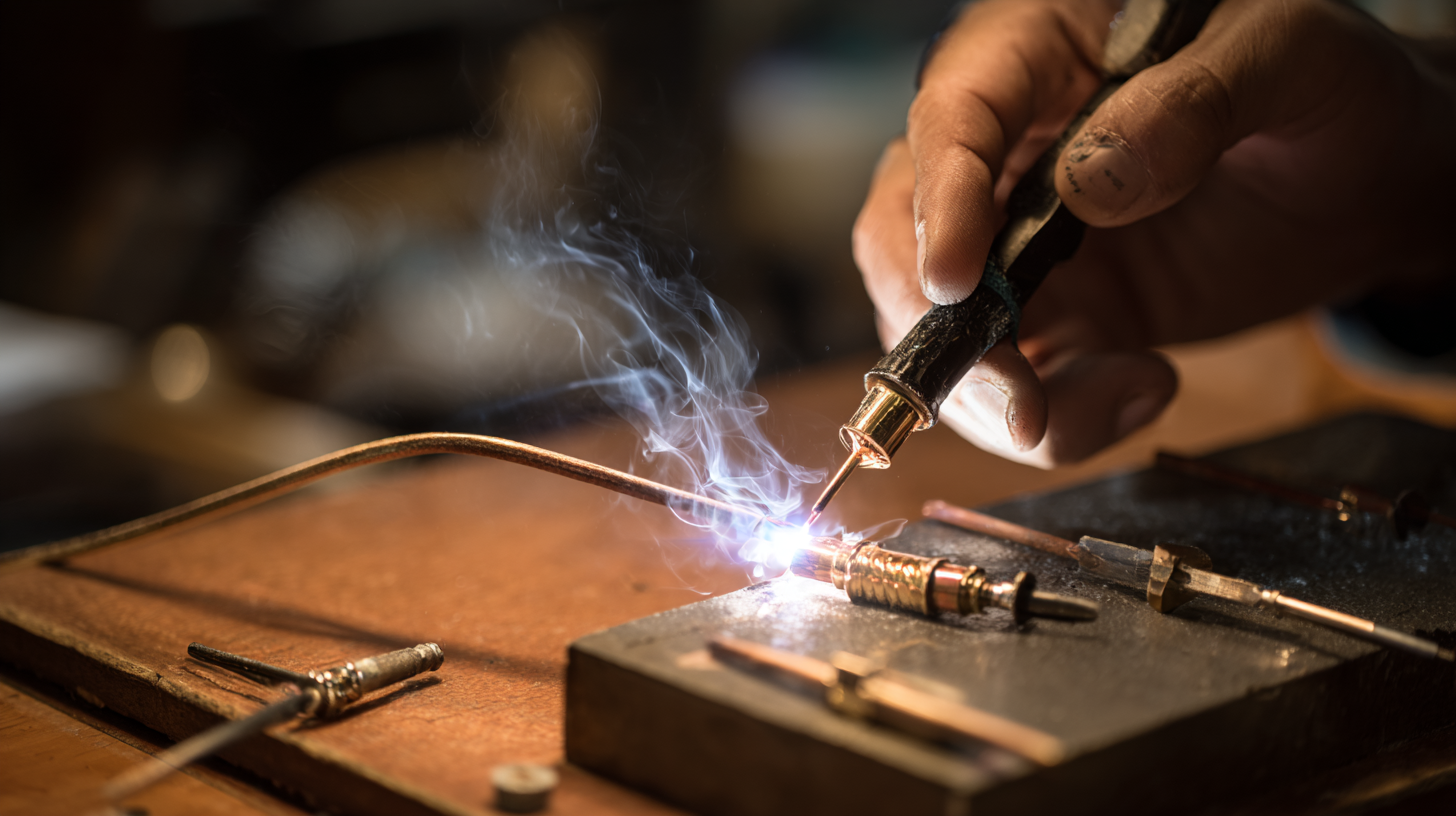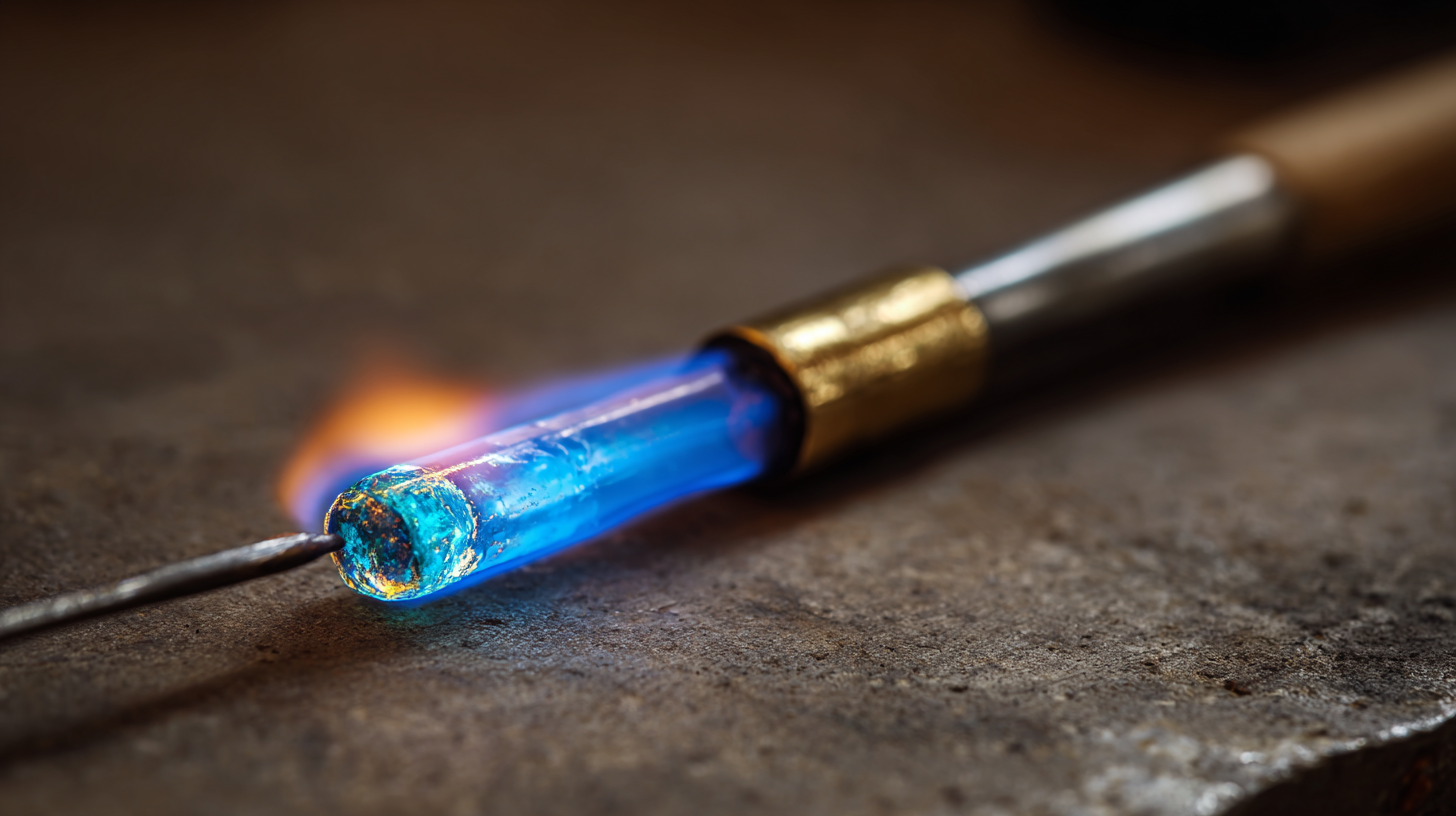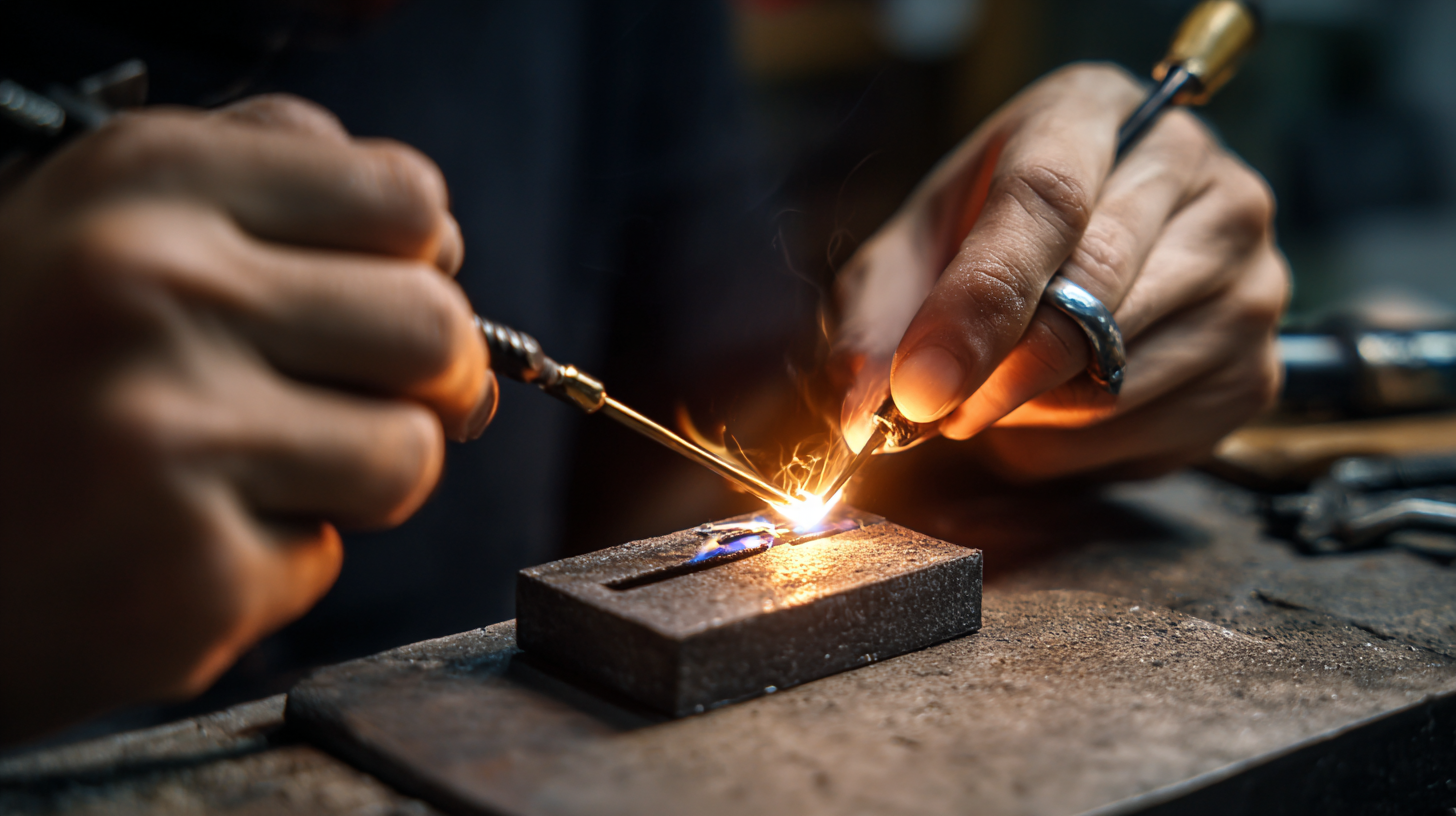In the world of jewelry making, mastering basic soldering techniques is fundamental for achieving stunning and professional results. According to a report by the Craft and Hobby Association, nearly 30% of adults in the United States engage in some form of jewelry crafting, making it a popular avenue for creative expression and entrepreneurship. A well-equipped basic jewelry soldering kit is essential for both beginners and seasoned artisans to ensure accurate and lasting joinery. With the right tools and techniques, creators can not only enhance the durability of their designs but also elevate the overall aesthetic appeal of their pieces. This blog delves into essential soldering skills that will empower you to bring your unique jewelry visions to life, showcasing how even the simplest soldering methods can lead to breathtaking results.

When diving into the world of jewelry soldering, having the right tools in your crafting kit is essential for achieving stunning results. Essential tools include a soldering iron, soldering block, and flux, each serving a crucial role in the soldering process. A reliable soldering iron with adjustable temperature settings allows for precise control, which is vital when working with delicate materials. Additionally, a soldering block provides a heat-resistant surface to protect your work area while allowing you to position your pieces just right.

When embarking on your jewelry soldering journey, understanding different solder types is fundamental to achieving stunning results. There are primarily three types of solders: easy, medium, and hard. Easy solder melts at a lower temperature, making it suitable for initial joins and delicate pieces. Medium solder can withstand higher temperatures and is ideal for creating stronger joins when layering different parts. Hard solder, while requiring the highest temperature, is best for high-strength applications, allowing your pieces to hold up over time.
Tips: Always select a solder that matches the metals you’re working with. For example, use silver solder for silver pieces to ensure optimal bonding. Additionally, consider the specific requirements of your design—if it involves multiple solder joints, starting with easy solder and progressing to medium or hard as needed can help prevent earlier joints from melting.
Another consideration is the flux, which plays a crucial role in soldering. It helps prevent oxidation during heating, ensuring a clean joint. Choose an appropriate flux for your solder type; for instance, use a borax-based flux with silver solder for the best results. Proper preparation before soldering will not only enhance the flow of the solder but also improve the overall finish of your jewelry.
Mastering the art of jewelry soldering is undeniably linked to precision in temperature control. According to a recent industry report by the Jewelry Industry Association, improper soldering temperatures can lead to 75% of jewelry defects, emphasizing the importance of managing heat effectively during the soldering process. When crafting intricate designs, even a slight fluctuation in temperature can result in damage to the metal, such as discoloration or weakening of the joints. Therefore, understanding the melting points of various solder alloys is crucial for achieving stunning results.
Tips for effective temperature control in soldering include using a reliable temperature-controlled soldering station and familiarizing yourself with the specific properties of the metals you’re working with. Start with a low temperature and gradually increase it until the solder flows. This controlled approach minimizes the risk of overheating surrounding components. Additionally, employing a heat sink can help divert excessive heat away from delicate areas, preserving the integrity of your designs while enhancing the overall quality of your finished pieces.
Another valuable tip is to practice on scrap materials before advancing to your final project. This hands-on experience will familiarize you with your equipment and allow you to gauge the correct temperature settings based on the metals in use. Such preparatory steps significantly enhance your soldering proficiency and ensure that your jewelry is not only beautiful but built to last.

Soldering jewelry can be a meticulous yet rewarding craft, but common mistakes can lead to less-than-stellar outcomes. According to a report by the Jewelry Industry Council, approximately 72% of novice jewelers struggle with soldering techniques, primarily due to misapplication of heat and poor solder choice. Understanding these pitfalls is crucial for achieving flawless results in your projects.
One of the most frequent errors is overheating the metal, which can weaken the piece and cause distortion. A study from the Gemological Institute of America revealed that maintaining a consistent temperature within a range of 350°F to 450°F is essential for effective bonding without compromising structural integrity. Additionally, using the wrong type of solder for your materials can result in weak seams; for instance, using silver solder on gold jewelry may lead to an unattractive joint. Always match your solder to the base metal for optimal adhesion and aesthetic continuity. By learning to avoid these critical mistakes, jewelers can elevate their craft to produce stunning, durable pieces.
When embarking on your jewelry soldering journey, safety should always be your top priority. To create stunning pieces without compromising your well-being, it’s essential to equip your workspace with the right tools and precautions. Wear protective eyewear to shield your eyes from bright sparks and harmful fumes. Additionally, consider donning a respirator mask if you’re working in a poorly ventilated area to avoid inhaling toxic fumes released during soldering.
Another important aspect of safety is ensuring your workspace is organized and free of flammable materials. Before you begin soldering, clear your bench of unnecessary items and have a fire extinguisher readily accessible just in case. It’s also advisable to work on a fireproof surface, such as a soldering pad or brick, to minimize risks. A clean work environment not only enhances safety but can also lead to more efficient and enjoyable soldering sessions.
Finally, make sure to practice proper tool handling. Always use well-maintained tools and keep them in good condition to avoid accidents. When using the torch, ensure it is securely attached and that you’re familiar with its operation. This practice not only keeps you safe but also improves your soldering skills, allowing you to focus on achieving those stunning results.
